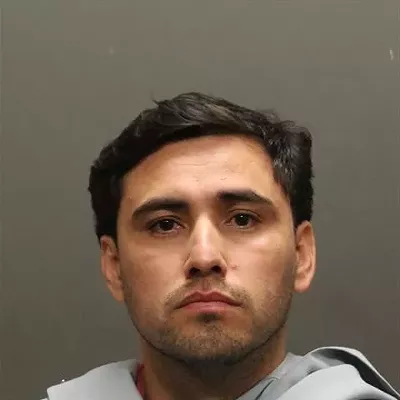But Tucson police say there's no need to worry about any large-scale outbreak of usage of the drug described by local health professionals as the hardest, most deadly habit to kick.
Customs and Border Protection spokesman Brian Levin says that in fiscal year 2006, 188 pounds of heroin was seized from vehicles and pedestrians trying to make it across the border. That's a jump from the 75 pounds agents seized the fiscal year before.
While that doesn't sound like much when comparing the thousands of pounds worth of pot wrangled by U.S. Border Patrol, the proof is in the street values. According to U.S. Department of Justice statistics, a pound of heroin averages $19,000. A pound of pot is worth around $400.
Levin says drug traffickers are looking for maximum profit when running the gauntlet through border checkpoints.
"The profit is in the hard stuff," he says.
What's strange is the increasing amount traffickers are bringing over at one time. For instance, in February a vehicle was caught bringing in 16 pounds of heroin. "They're definitely getting more bold," he says.
A U.S. Drug Enforcement Agency fact sheet states that as of 2004, prices for heroin in Phoenix had dropped by 40 percent. However, Tucson police Capt. David Neri, commander of the Pima County/Tucson Metropolitan Counter Narcotics Alliance, says prices here haven't changed much. The alliance that Neri heads is a conglomeration of 18 districts around Southern Arizona that provide strategy and support to eradicate drug rings.
The DEA fact sheet also says that heroin is becoming more commonplace in Phoenix-area high schools. This came a year before the October 2005 bust of a huge heroin syndicate that rocked Catalina Foothills High School.
But the seizure numbers and DEA stats aren't foolproof indicators of the amount of smack making it to Tucson's streets.
"We're only a distribution point, says Neri of Tucson. "The majority of what's getting through the border will go all over. Tucson gets the scraps."
Neri says that while he doesn't think the number of heroin users has jumped much, many addicts finding it harder to score once-abundant, Arizona-made methamphetamines are switching to heroin as a way to take the edge off withdrawal. He had numbers showing a stark decrease in the number of homegrown meth labs, which he said accounted for about 25 percent of the drug that available on Tucson's streets. When the alliance was formed three years ago, his team was conducting up to two lab busts per month. Today, busts are far less frequent. Each bust, Neri says, netted a cell of around 40 people, including people to cook the drug, find supplies and sell and launder money and property.
"These are the people who are addiction-motivated, who will steal property and cause problems in neighborhoods," he says. "They'll do anything. They're looking for a fix."
The remaining 75 percent of meth on Tucson's streets is a slightly more potent version from Mexico, and, like heroin, is trafficked by organized crime.
Levin says while heroin seizures have skyrocketed, meth seizures at the border have remained consistent.
Craig Lees is the assistant director of community supervision for Compass Healthcare and works closely with probation officers on counseling addicts. He says Neri's assertion that a meth addict may use heroin to soften withdrawal makes sense, but he hasn't actually come across a patient who has done so. He hasn't seen an increase in heroin addicts over the past year, either.
"They're two completely different highs, but heroin will definitely get you there," Lees says.
Lees added that most clients he's seen with heroin addiction are normally older, compared to the younger generation that meth attracts. However, there are exceptions, such as an April report of a 20-year-old heroin addict getting arrested for holding up 12 Tucson businesses.
Heroin addicts are also not prone to the same outrageous and/or violent behavior meth addicts are known for, Lees says: "If I had a choice in a world of two evils, I'd choose one with heroin."
Lees says kicking the heroin habit is much more difficult than kicking meth, with a recovery road chock full of unbearable pain, chills and hot flashes that too often lead to relapse. Also, the high-speed, crash-and-burn lifestyle led by meth addicts results in a quicker realization of a lethal problem.
"Normally, (meth users) realize the devastation they've caused much more quickly, not like heroin," Lees says.
Gone are the days when Tucson's streets played host to the almost mythical and super-potent white version of heroin. These days, black tar, which is rumored to be black from shoe polish, and a slightly more powerful chocolate-colored powder mixture are all that's available, both Neri and Levin say.
Observations of heroin abuse from other area agencies are nil. Pima County Medical Examiner Dr. Bruce Parks says that, offhand, he hasn't seen anything unusual in the way of heroin or meth overdoses. He also said that his department doesn't keep statistics specific to opiate-related deaths readily available.
Tucson Fire Department Capt. Paul McDonough says he also hasn't recently heard anything out of the ordinary. His department doesn't keep specific opiate overdose numbers readily available, either.








